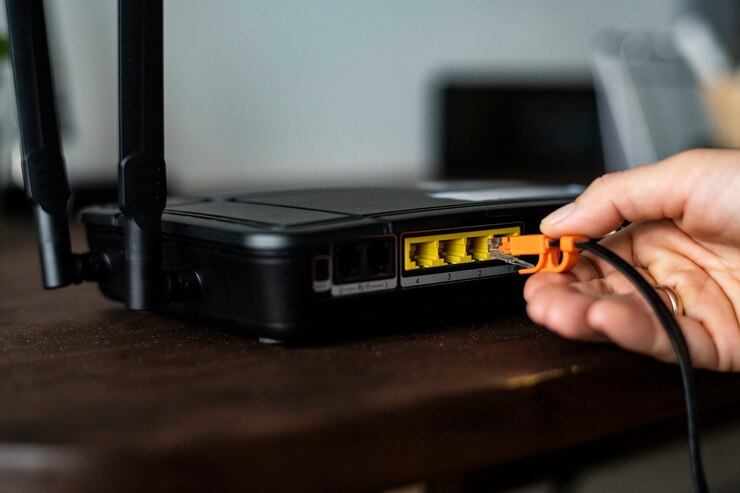TECH
Exploring the Different Types of Ethernet Switches

Ethernet switches are vital network infrastructure components, enabling efficient communication between devices. With advancements in technology, the variety of Ethernet switches has expanded, each serving distinct purposes. Understanding these differences is crucial for optimizing network performance and security.
One of the cornerstone technologies in networking is ethernet switching, which ensures that data packets navigate efficiently through the network. Modern networks demand high reliability and seamless data flow, and Ethernet switches deliver just that by intelligently directing traffic and minimizing latency.
Key Takeaways
- Different types of Ethernet switches provide various functionalities tailored to specific needs.
- Managed switches offer more control and security features compared to unmanaged switches.
- Power over Ethernet (PoE) switches streamline the setup of connected devices.
- Switch selection impacts overall network efficiency and security.
Why Ethernet Switching Matters
The type of Ethernet switch significantly influences network performance. These switches can manage network traffic, reduce congestion, and enhance security. Properly implemented, Ethernet switches can lead to more stable and faster networks, critical for personal and business environments.
Choosing the right switch can prevent bottlenecks, ensure data integrity, and enhance user experience by providing seamless connectivity.
It’s not just about connecting devices but optimizing the entire data flow process to make network operations as efficient as possible. This optimization is particularly crucial for businesses that rely heavily on real-time data processing, such as financial institutions and healthcare providers, where delays can have significant repercussions.
Types of Ethernet Switches
1. Unmanaged Switches
Unmanaged switches are straightforward, plug-and-play devices with basic connectivity without configuration. These switches are ideal for small offices or home networks that do not need advanced features. Their main advantage lies in their simplicity and cost-effectiveness. While they lack more sophisticated management and security features, unmanaged switches allow multiple devices to communicate within a local network efficiently, serving well in environments with minimal network demands.
Despite their simplicity, unmanaged switches can still offer reliable performance for everyday network tasks such as file sharing, internet access, and streaming media. Their limited features make them easy to install and maintain, thus reducing the need for technical expertise.
2. Managed Switches
Managed switches provide a higher level of control and customization. They allow for network configuration, monitoring, and management, offering features such as VLANs (Virtual Local Area Networks), Quality of Service (QoS), and enhanced security settings. Managed switches are suitable for larger networks where performance and security are critical.
Through VLANs, network administrators can segment traffic, enhance security, and improve performance by isolating specific groups of devices. The ability to prioritize certain types of traffic with QoS settings ensures that essential applications receive the necessary bandwidth, making managed switches ideal for business environments with complex networking needs.
Moreover, managed switches support various protocols and can be configured to perform detailed traffic analysis, helping administrators identify and troubleshoot network issues more efficiently. This granular level of control is instrumental in maintaining high performance in environments with rigorous networking demands, such as data centers and corporate networks.
Additionally, managed switches often come with integrated security features that protect against potential threats and unauthorized access, ensuring data integrity and confidentiality.
3. PoE Switches
Power over Ethernet (PoE) switches simplify network setups by providing power and data connectivity over a single Ethernet cable. This technology is particularly beneficial for deploying devices like wireless access points, IP cameras, and VoIP phones, which can be positioned without a nearby power outlet. PoE switches streamline installation processes, reduce clutter, and enhance flexibility, making them an excellent choice for enterprise and growing office environments.
Their ability to deliver power directly through network cables reduces the amount of wiring needed and makes it easier to relocate devices as needed, thus increasing overall network flexibility.
PoE technology also enhances safety by minimizing the need for multiple power cords and reducing the risk of electrical hazards. It is vital in creating smart office environments, where seamless connectivity is crucial for productivity.
These switches support various power standards, ensuring compatibility with various devices. As such, PoE switches are a practical and efficient solution for modern network infrastructures that demand both power and data delivery through a streamlined setup.
Choosing the Right Switch for Your Network
Selecting the appropriate Ethernet switch depends on several factors:
- Network Size: Larger networks demand switches with more ports and advanced management features. Smaller setups suffice with fewer ports and simpler configurations, whereas expansive networks require robust, scalable solutions.
- Data Traffic: Consider the volume and type of data traffic. High-traffic environments benefit from managed switches with QoS capabilities. Managing traffic efficiently is crucial for maintaining performance for networks dealing with large data transfers or numerous connected devices.
- Security Requirements: Networks handling sensitive information should invest in managed switches with robust security features. Enhanced security protocols, VLANs, and regular monitoring capabilities help protect against unauthorized access and data breaches.
- Device Power Needs: PoE switches offer a streamlined solution if deploying multiple devices requires power. This is particularly relevant for setups that include security cameras, access points, and other powered devices, simplifying installation and maintenance.
For instance, a small office setup might do well with unmanaged switches due to their simplicity, whereas an enterprise-level network responsible for sensitive data transmission would benefit from the advanced controls and security features of managed switches.
The specific use case and future scalability should always be considered to ensure long-term network efficiency and reliability. Investing in the right type of switch can provide a scalable foundation that adapts to growing network demands, ensuring sustained performance and security.
Real-World Applications of Ethernet Switches
Ethernet switches are employed across various sectors with diverse needs. For example, educational institutions use VLANs in managed switches to separate student and administrative data, improving security and performance. Healthcare facilities utilize PoE switches to power and connect IP cameras and patient monitoring devices seamlessly. Retail stores rely on managed switches to ensure secure and reliable point-of-sale systems and inventory management.
Network experts say Ethernet switches can significantly affect operational efficiency, especially in environments with complex connectivity and security needs.
In large enterprises, managed switches facilitate the segmentation and prioritization of network traffic, essential for ensuring critical business applications run smoothly without disruption.
Retail stores, on the other hand, benefit from the enhanced security and reliability provided by managed switches, protecting sensitive transaction data and customer information. In healthcare environments, the ability to prioritize traffic for critical patient monitoring systems and ensure the security of sensitive medical records makes managed and PoE switches indispensable.
Future-Proofing Your Network
Investing in scalable Ethernet switch solutions can safeguard your network against future demands. As businesses grow and technology advances, having switches that can adapt to increased data loads and additional devices is crucial. Future-proofing with managed and PoE switches ensures that network infrastructure remains robust, efficient, and capable of supporting new applications and services.
Incorporating the latest features and technologies in Ethernet switches enhances current performance and provides a foundation that can grow alongside the business, mitigating the need for frequent and costly upgrades.
Planning for future expansion and increasing network capacity are essential considerations for any organization looking to maintain a competitive edge. Scalable Ethernet switches allow for easy integration of new technologies and devices, ensuring that network infrastructure remains effective and responsive to evolving business needs. This proactive approach helps avoid the challenges of network obsolescence and ensures continuous support for emerging networking trends and requirements.
Conclusion
Exploring the different types of Ethernet switches reveals their significance in maintaining efficient, secure, and scalable networks. From the simplicity of unmanaged switches to the advanced capabilities of managed switches and the convenience of PoE switches, each type serves unique needs and environments. Users can optimize network performance, enhance security, and ensure a future-ready infrastructure by carefully selecting the appropriate switch.
Staying informed about the latest advancements in Ethernet switching helps make well-informed decisions that contribute to the sustainability and effectiveness of network systems in the long term. Organizations that understand different Ethernet switches’ distinct functionalities and benefits will be better equipped to design and maintain robust, efficient, and secure network infrastructures.







